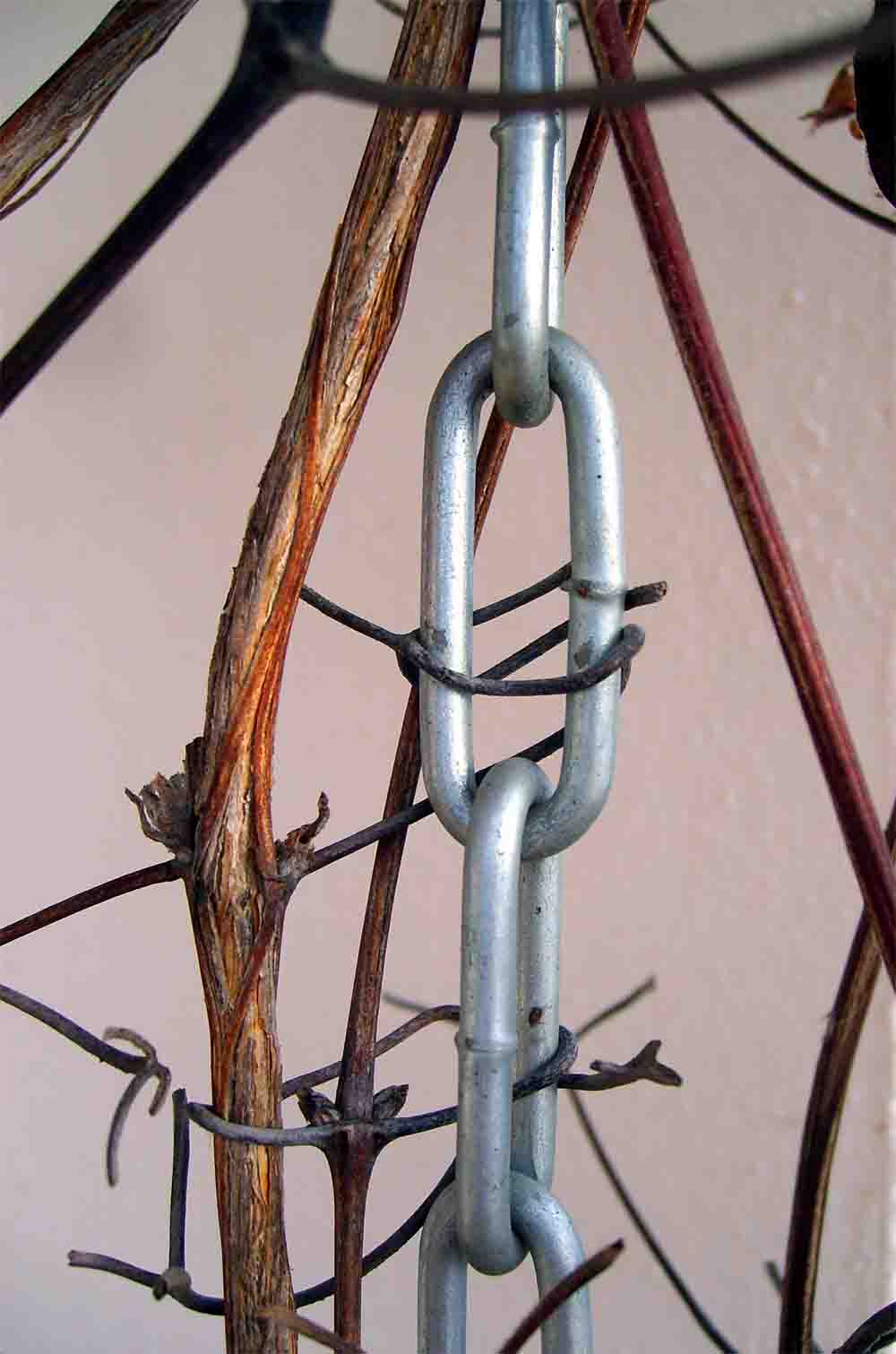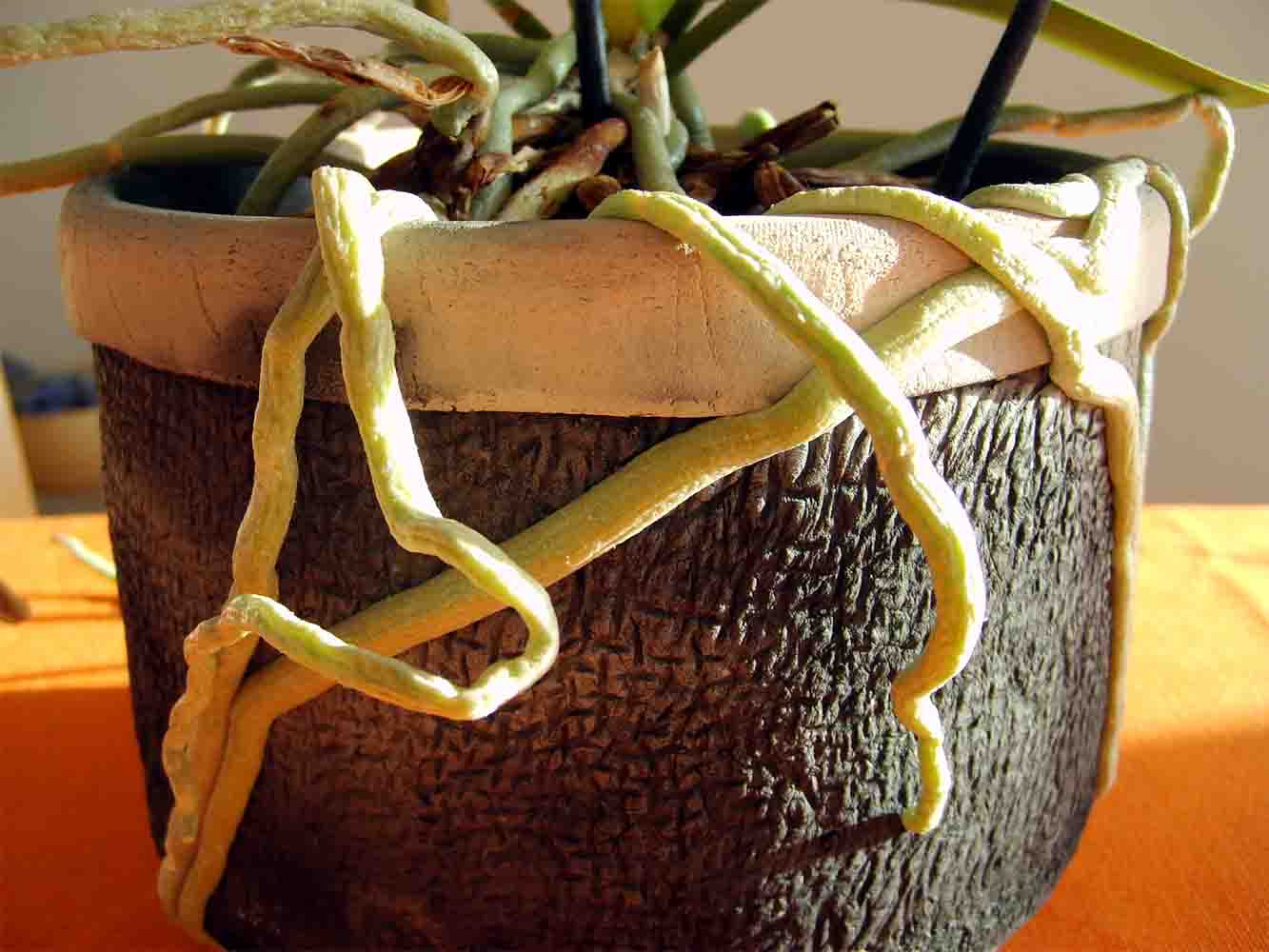Thigmotropism
Let me tell you, some plants are really “touchy”!!!
What is thigmotropism? It is a plant's response and movement to physical contact.
|
|
| Clematis plant holding on to a chain.
|
|
|
For instance, climbing plants with coil-like structures (tendrils), first bend and turn until they touch a suitable supporting object. As soon as a tendril reaches this support it releases a class of phytohormones called auxins into the tendrils causing them to grow towards the supporting object.
This happens as follows: Auxin makes the cells in the tendrils that face away from the support growing longer and stronger. This helps the tendrils to also find the support to grow around. The cells of the tendrils that have contact with the support are devoid of auxin and therefore weaker; this combined process causes the tendrils to coil around the supporting object.
In short: It is the result of the differential rate of elongation of cells on opposite sides of the tendrils. This is not only true for tendrils but also for all other plant organs and therefore for all
plant tropisms.
Actually, this growth process around a support is smart: A plant that twines around a support needs to invest less energy in its own supportive tissue. Instead, the energy is used to grow faster towards the sunlight, which is an advantage over other plants! Have you ever observed a bean or pea plant growing around a stick? They grow fast, really fast!
Types of Climbing Habits
In the first paragraph I mentioned climbing plants that use twining tendrils to receive support as an example. Yet, not all climbing plants grow like this. There are also other plant organs that are used gain support through touch:
- Twining stem around a support
- Clinging roots
- Twining petioles
- Tendrils (shoots, leaves, inflorescences)
- Hooked structures (thorns, hooked branches)
|
|
| Epiphytic orchid with aerial roots that hold on tight to the pot! |
Examples of Plants that Show Thigmotropism Include:
Typical garden or houseplant climbing plants:
Other climbing plants:
Return from Thigmotropism to Tropism Return from Thigmotropism to the Plant and Flower Guide


